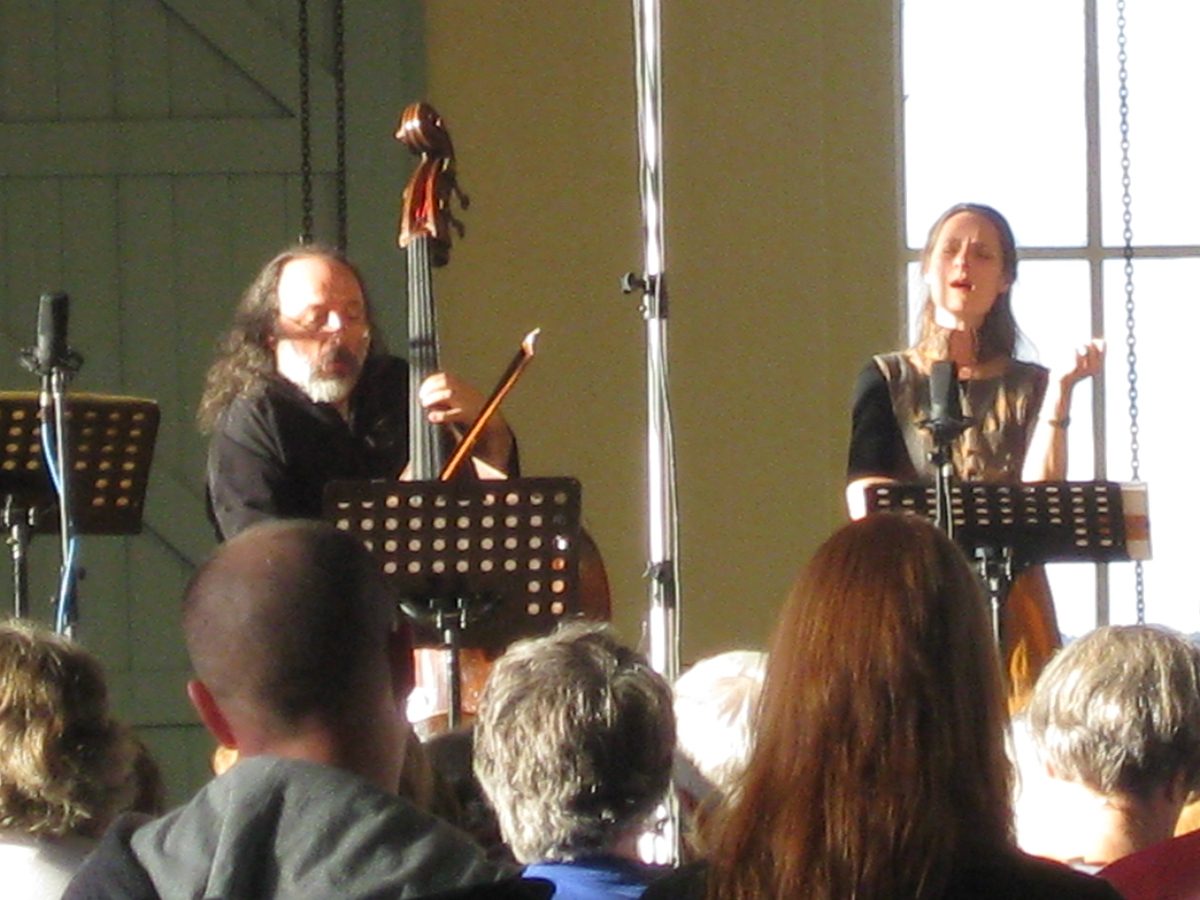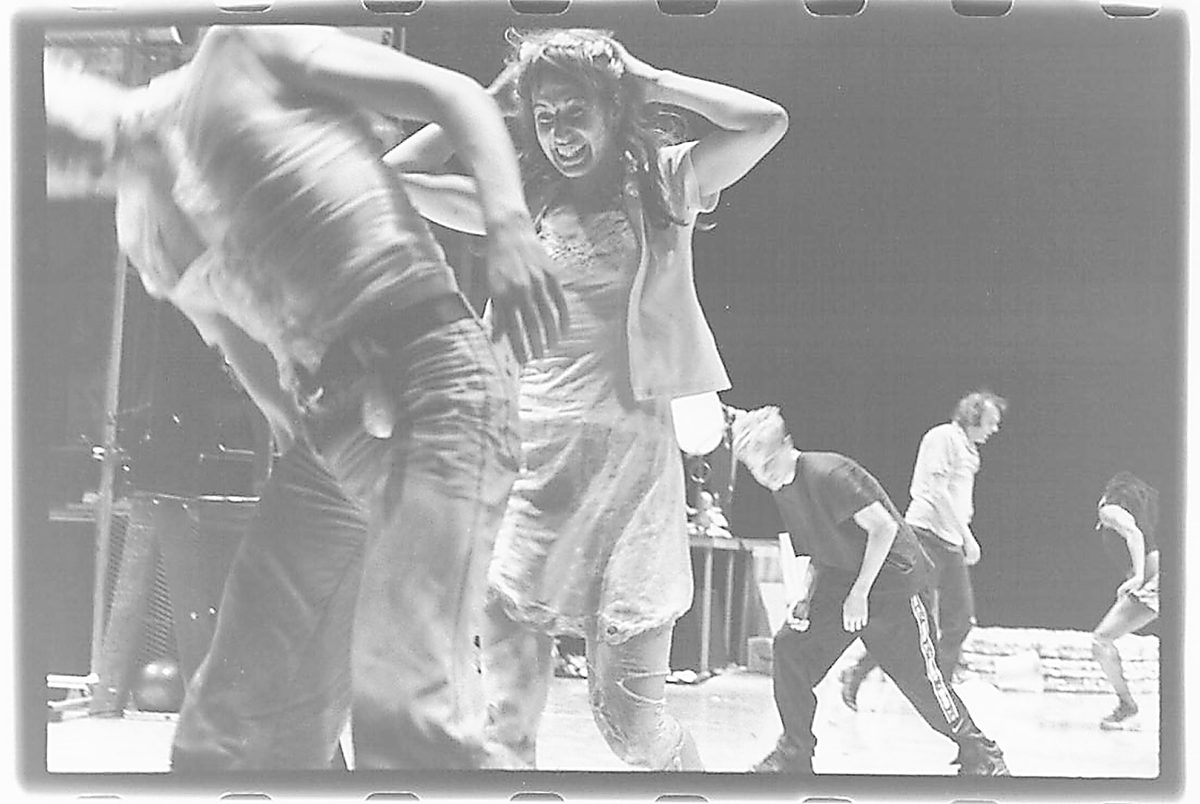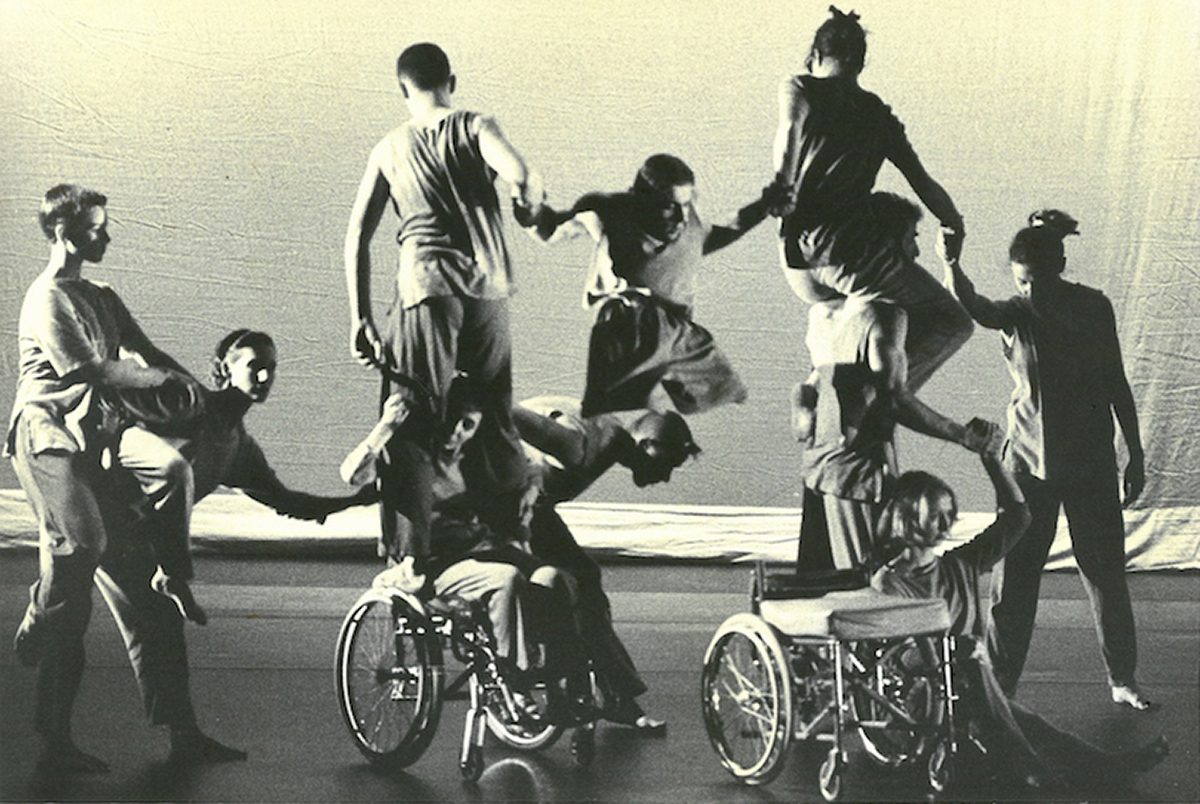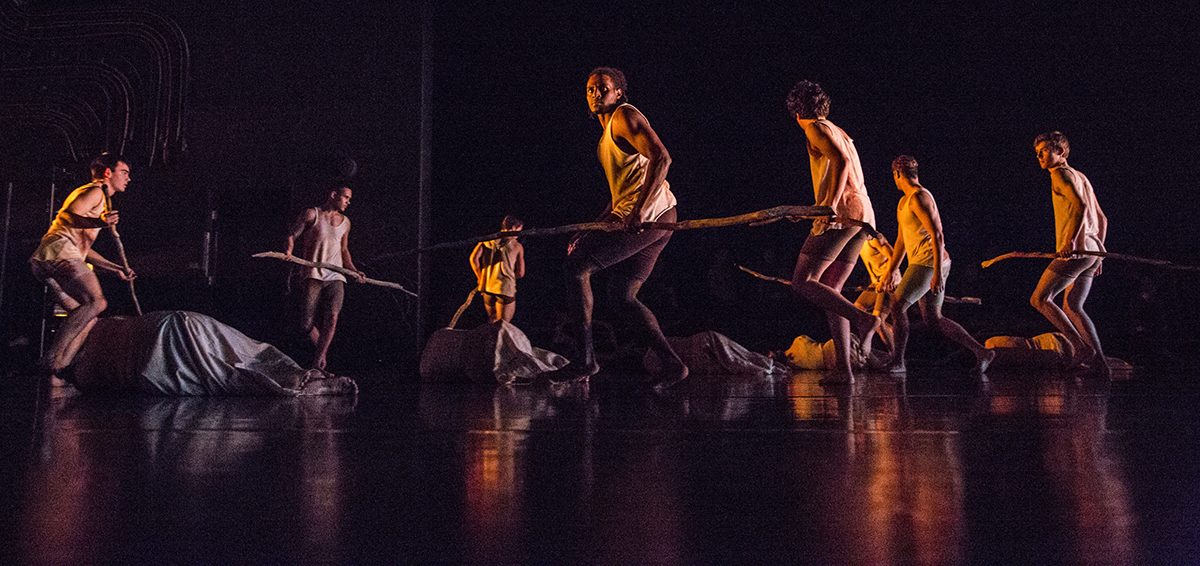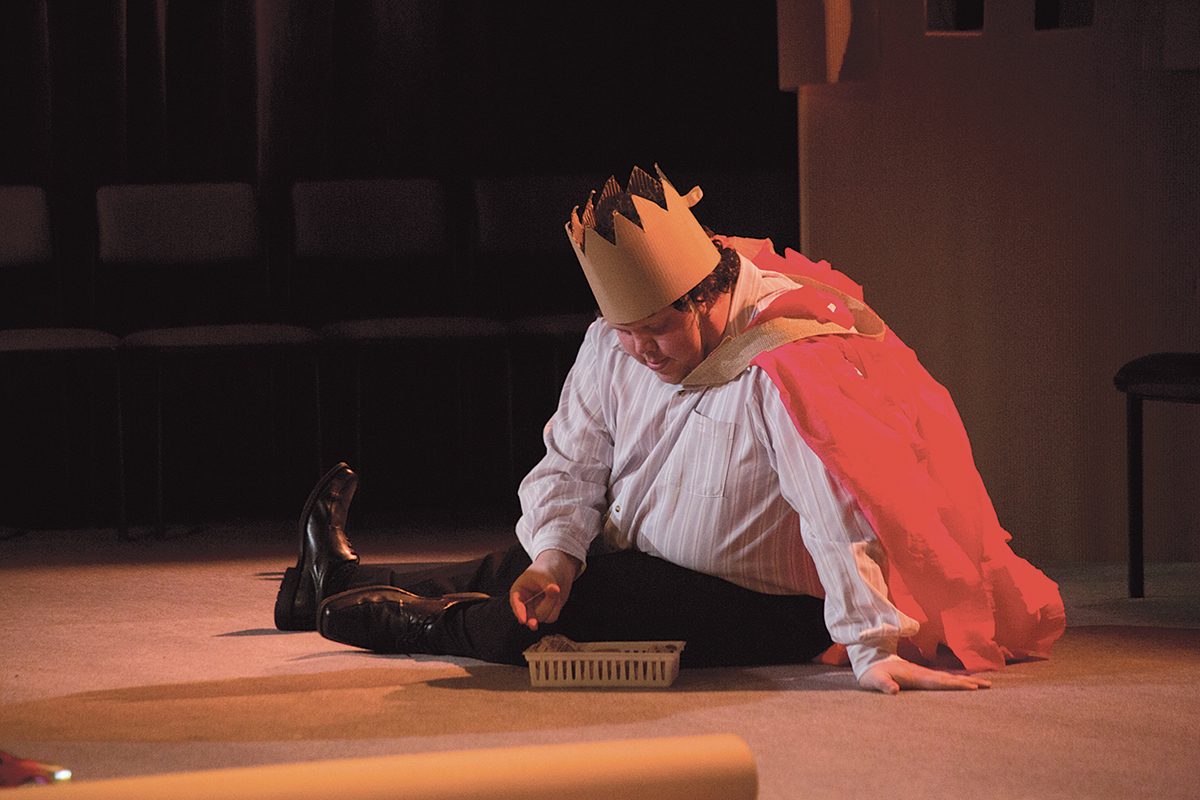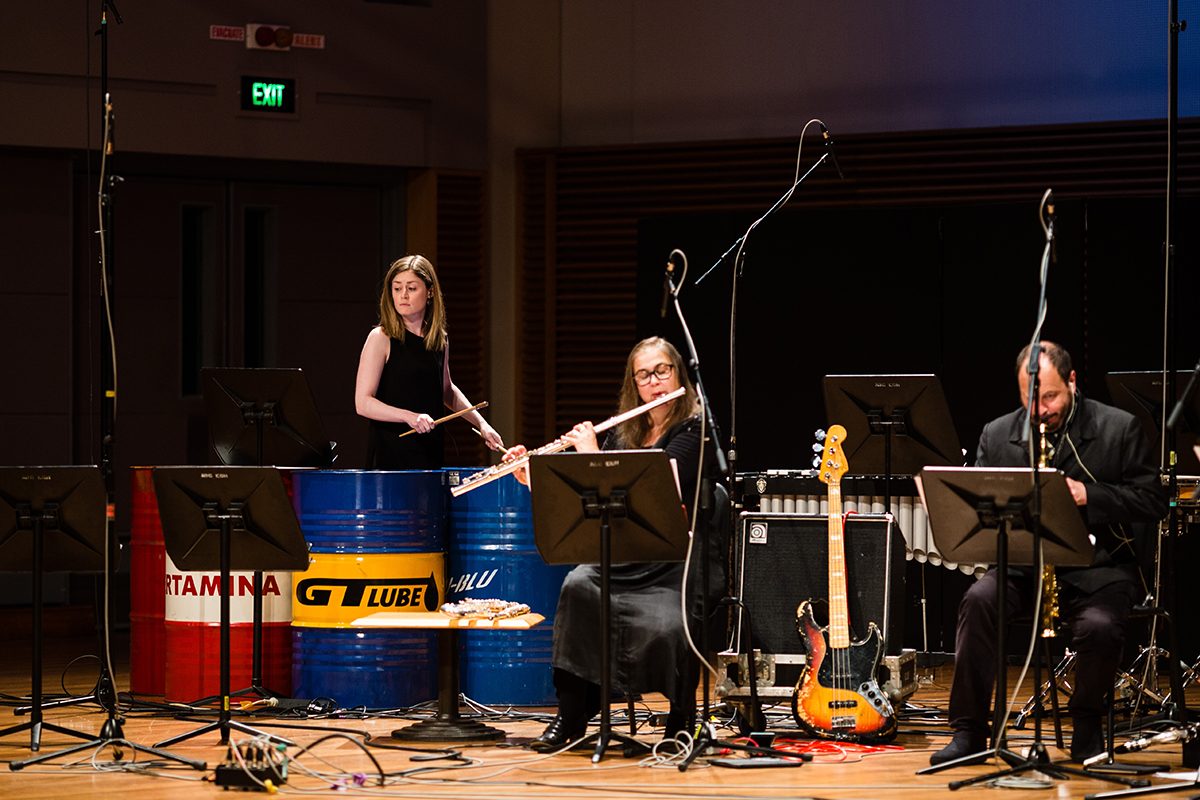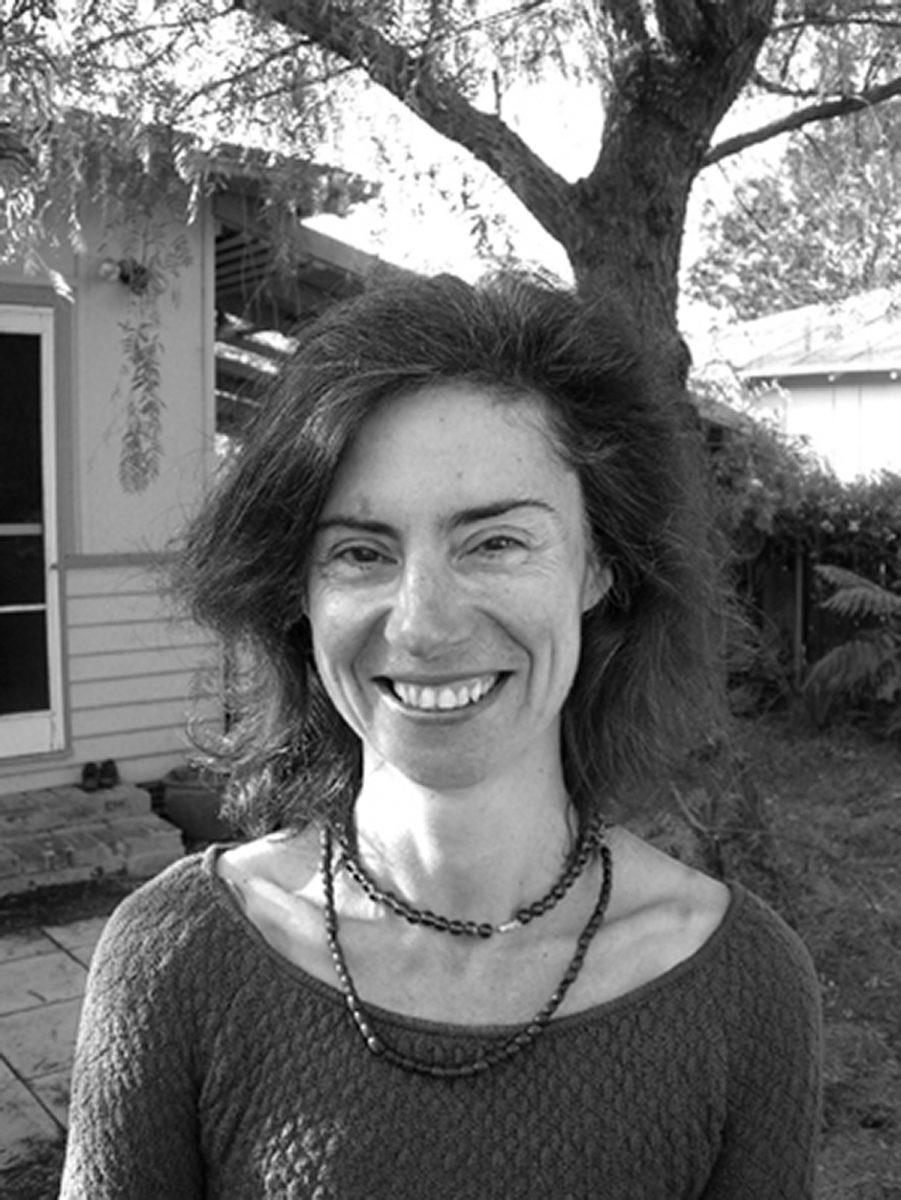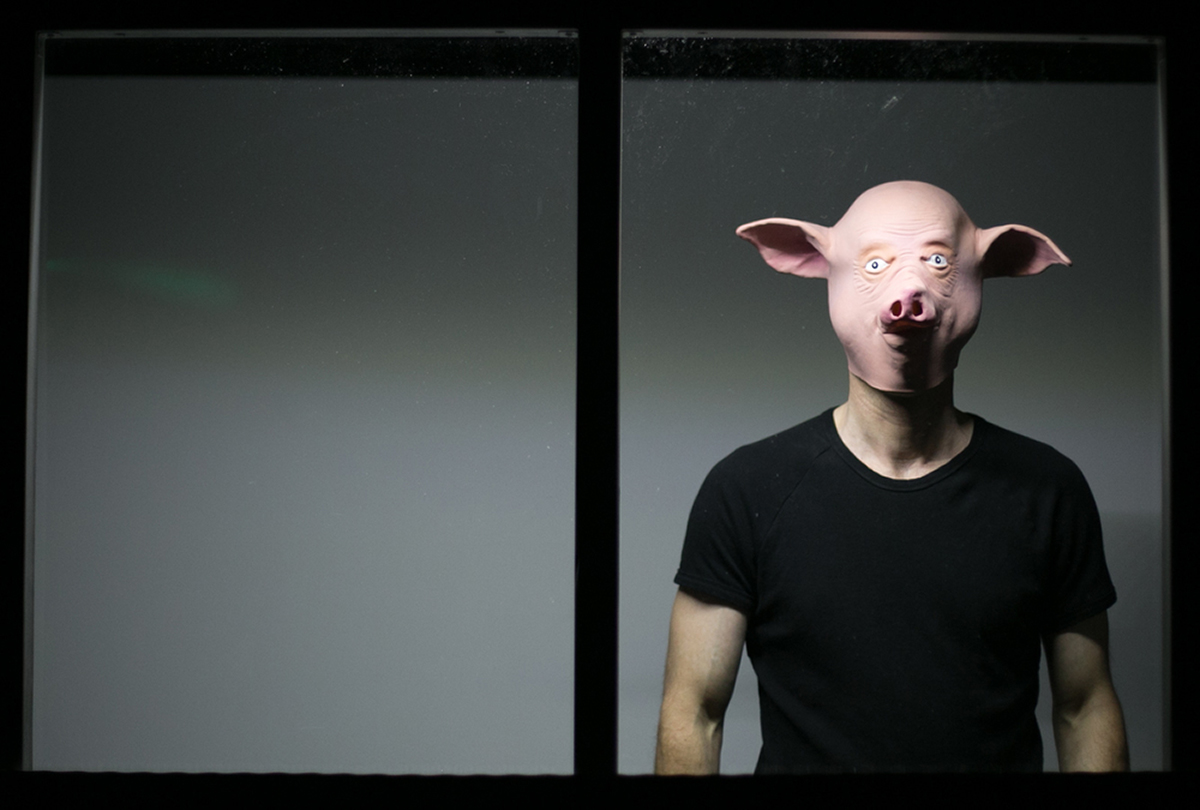
Writing the art experience: Itching shaking crying being held – Part I: Of silence and silencing
Being has teeth
To be touched by art is to be hurt — sometimes bitten, buffeted, brought to the edge of the cliff of how we know ourselves. Born again, or for a first time, wishing for less, wishing for more.…
In 25 years of writing for Real Time, I have reviewed shows about bees, bastards and fires (Nikki Heywood’s Creatures Ourselves [RT6, page 6], 1995; Raoul Craemer in Pigman’s Lament haunted by his fascist grandfather’s ghost, 2016; and a 2003 dance work, Constructed Realities (RT 53) about “our brittle landscape” upstaged by real-life bushfires:
“To see, to have seen a performance in such circumstances… puts pressure on a work’s tone and meaning; but perhaps all theatre events, to be deeply of relevance and value, need to match and meet this pressure…In life, we are already asked to see more than enough.”
At times, we are led like hopeful brides to the altar of special events, but find instead “gaudy spectacles, shuffled performances, screeching microphones (in) nostalgic serenades for the ethnic hordes” (Canberra Multicultural Festival, 2007), or quasi-participatory journeys into psychic ‘undergrounds’ (“now everybody dance, everybody sing,” Real Time@London International Festival of Theatre, 1997).
At times, the “endurance of seeing too little is sometimes as difficult as viewing too much” (RT 53 again). On the other hand, I have had moments where a performance encounter “reminds me that every act of seeing/listening can remake the world”: where music group Jouissance’s proto-Byzantine prayer “breaks, dives and flutters” in “an almost archaeologic examination of the breadth and depth” of human soul (RT97); or where the “huge beauties” of Jiri Kylian’s Bella Figura and La Petite Mort reveal “trouble thrumming along skirt-swept courtyards” and rapiers drawn “like floss through teeth” in a “delicate hunt of ordered passion” — a piece on Renaissance court intrigues (Melbourne International Arts Festival MIFA 1996).
These are voices, organs, bodies, doing vital things in the world. Performance sits at the very edge of our face-to-face encounters, where the ethics of our actions — and our looking — come under heightened scrutiny. Spectatorship engages all our viscera: if I sit in proximity to someone’s body I can hear their organs chugging, their lungs respiring, veins, bubbling, stomach twisting, skin composing, decomposing, all in different rhythms, and at the same time.
Seeing impels me to feel, feeling impels me to speak — and to hope that art respects my seeing. I try to look both ways — as a maker, at the possibilities of a circumstance; as a seer, at what enables (or disables) visions to be realised.
Festivalities
There’s an intensity to festivals — surviving the trek to Adelaide Festival 2000 “after a night in Motel Hitchcock — Baygon and brick, my restless child turning circles into sharp walls” — or making it to London in 1997 with RealTime at the London International Festival of Theatre (LIFT), and living for 5, 7, 28 days in an arts avalanche. At LIFT, troubled currents stirred the silt of the Thames, in cultural essays from the colonies (7 Stages of Grieving; the Geography of Haunted Places), and an account of the collective amnesia of a nation (Germany after 1945) trying to bury and clean-slate its history in a “zero hour” — Berliner Schauspielhaus’ Stunde Null). A huge block of ice slow-dripping grief, a chimpanzee “advisor” and a chorus of grown men in pyjamas crooning folk hymns play the nexus between sleeping, wakening and complacency. We are made by all the waters we swim in, read about and see on stage.
Praise me for my looking
I had readers offended that I took issue with Lloyd Newson’s Enter Achilles (Adelaide Festival 1996). The work, about the “labyrinth of male rituals” is set in a pub:
“…the ideal location for head (butting), ear (holding), shoulder (shoving), chest (puffing), bellies (sleeking), thighs (crunching, mocking, smooching), knees (jiving), ankles (flicking), soles (crushing). It is a piece full of vomit, brawn, competitiveness, the demeaning of women, hyperbolic Superman fantasies — and just plain showing off…
“The dancers execute everything so well, from punch-ups to push-ups, from piss-ups and pissing in pints to a red-hot rope act and fucking an orgasm-painted plastic doll until the doll is slaughtered and the men shed crocodile tears.
“These guys are heroes with great arses (and) the audience loves it. Just like life, they say, when the final’s over, and they begin their response replays. We have to watch from the sides of the football field, and cheer on.”
In the current #MeToo context, this conversation is now, and always.
Similarly — and pre-empting the Royal Commission into the Institutional Abuse of Children — what plays in the shadows of Alain Patel’s lets op Bach (Adelaide Festival 2000) carries eternal significance:
“Tumbling, juggling: there’s a toddler — a real 0ne (as in a family circus) — tricycling the stage amidst roastings, lechery, lynchings, wildfire. Her constancy touches me as I touch soil under crisis: her ribboned presence a continuo beneath the carryings-on. I weep, often, wet and long, throughout this work: when the man leers at the fully-dressed pubescent dancing amongst half-naked women, as if she, what is beneath this pointed, long-sleeved she, is an easy hamburger for the taking.
“This raucous, bloodied work makes me glad to be alive to see this mirror back on myself. I recognise: where I fear life, what contradictions, imperfections I don’t like to see. They’re up there dancing, baby. Sometimes from such places of grief we can come to looking.”
Bodies, coping, crying, wounding, wounded. I ask, “Do I write better whilst lactating?” Does it make a difference that I am in the zone of breastfeeding over this year’s viewing? At MAP in 1998 in Melbourne, “I go weak at the knees without my baby daughter in the room.” Is compassion only dictated by circumstance?
In our current, ‘post-truth’ moment, raw and prophetic reflections on the fluidity of meaning in a world-without-foothold really matters.
“Shatter acid: Men magically slide up walls with desire, tubas leap through a window. A rake grows from watering (but love does not). A tuba examines a dead body which begins to sing. Does it matter to be alive? Does it matter than I ever had a soul?
“This is music-theatre, dance-theatre, theatre-theatre, where boundaries and borders truth and lies become the same dance, where reasoning is so mad that a meal becomes a murder…” (Claustrophobia, Maly Theatre of St Petersburg, Adelaide Festival, 1996).
Many able bodies dancing
My attention turns more and more to worrying about what is excluded from arts practices. I recognise now how work, such as a dance I reviewed in 1997, influences the future I will move into. In a piece, choreographed by Siobhan Davies for the mixed-ability company, CandoCo:
“David Toole uses his elbows like knees, his arms like levering cranes, his tumbles and turns somehow turning the earth like an earth-moving machine. Most of the fully-able-bodied dancers feel static beside him.”
And while “wheelchair-bound Jon French’s angularity was given wonderful space,” his qualities “could have been better threaded and echoed… throughout the piece.” I note that “working against isolation and exclusion” includes bringing different abilities into a shared vision.
Similarly, Entelechy, a company based in south-east London whom I first met at LIFT, includes people of multiple and severe disabilities and also works with people with dementia or Alzheimer’s disease.
“Their process creates a nexus between movement, music and sensory-based experience: ‘She likes soft cakes, not biscuits, rice on hands, African spices, the sound of water pouring.’ Their outcomes make apparent the moving beauty of thoughts and ideas at work beneath the skin. It makes you think how often our ideas of ‘dance’ come pre-fixed, limiting what we see, how we see it, and what we choose to show.”
The genre of youth dance, too, can be straitjacketed by the limited perceptions of its own audience, as evidenced in repeated criticism of Quantum Leap ensemble’s Canberra Playhouse seasons. Select Option — a vibrant, inventive, often stunning show — was berated for failing to display any ‘real’ choreographic pizzazz, collaboration or participant autonomy: “It was evident that the young performers did their very best to keep the grown-ups happy…doing what they were told to do and saying what is expected of them to say” (Arts Hub, July 31, 2013). I responded:
“The criticism is curious, as all QL projects — and especially this one — incorporate a considerable degree of…collaboration in terms of research, subject matter and choreography.”
I wonder at the level of narcissism in any audience. Does the performer ‘move me,’ or ‘move for me’? And is that all we’re there for?
“It probably takes a lifetime to understand our own sense of agency and relative freedoms. I think we can make a better attempt to appreciate what is there, not just what we expect to see, and try and examine more deeply the cultural imprimaturs we unconsciously bring with us every time we enter the theatre.”
Weapons of minute destruction
Urban Theatre Projects Catalogue of Dreams (2013) was a delicate show about bureaucracies, and children in custody and foster care. We move from a finely crafted scene of missed understandings, from “…the dinner-table scrape of cutlery, cutting, slicing, measuring all the unspeakable, the gaps in experience between the order and routine of ‘normal’ lives and the disorder that must have thrown a child into this circumstance” to the incredibly moving image of the social worker — a huge man trying to cast a very small shadow, sitting on the floor beside the troubled boy. This work — performed in a doughnut-shaped stage lined with lever arch files — managed to combine intergenerational and cross-cultural issues in a humane construct with sharp political edge. I’ve not often seen as delicate a representation of traumatised silence.
Other silenced voices now speaking
As late as 2017, ANU convened a special conference to address the global paucity of opportunities for performances of work by female composers (Composing Women, 2017). This event was prefigured by the National Festival of Women’s Music in 2001 and a special concert, After Julia (2014), centred on the Prime Ministership of Julia Gillard and the discrimination to which she was subjected. Cat Hope—formerly director of the group Decibel, now head of Music at Monash, “…offered seven composers the opportunity to ‘give voice’ to their responses to this aspect of [Gillard’s] term in office. Parallels and interplay between visible and invisible, spoken and unspoken or muted forces at play, both politically and musically, were appropriately matched.
“Cathy Milliken’s piece, through its textural contrasts — rattles, rolls, chips and gliss that thicken and thin — insinuates a ‘court of intrigue,’ while Kate Moore’s Oil Drums, in cross-rhythms between piano and violin, “suggested tribal antagonisms, battles in vast desert, shattered horizons. I’ve never heard a high ostinato before but the keyboards play it, high-flying sand blinding the air.
“Her ‘contemporary Apocalypse Now’ plays in contradistinction to Andrée Greenwell’s melodic sprechgesang for six teenage voices: Gillard’s Prime Ministerial acceptance speech peppered with invectives, delivered from ‘the mouths of babes.’ How conscious or unconscious is misogyny?”
These are women grappling with the forces that drive politics, seeing and listening. Can we please have Milliken or Moore — or for that matter, Liza Lim — engaged as composer laureate to the Australian people?
Learning in other climes — from the LIFT experience
Forever, I am grateful to RealTime for taking me to London in 1997, to both experience and write about LIFT in a city that felt and still feels comfortable talking about art.
I learnt diplomacy from Keith Gallasch’s response to a backhanded swipe from a London team member, who found it easier to criticise colonial ‘plebs’ than to countenance multiple perspectives and experiences. Keith’s response emphasised the difference between diatribe (a kind of rubbing out) and dialogue (a conversation on equal footing).
The progeny of my time there carved out a future I had not yet imagined: devotion to CACD work and equity of access for people from many backgrounds and of many abilities.
It was a full 18 years before I could revisit London, those artists and places. The broad vision afforded me by writing for, and travelling with, RealTime, has allowed me to sharpen the ethics of my seeing and intention.
Endnote: archives.
An archive talks forwards and backwards through time. It prompts memories and highlights discrepancies of recall; but as Baxter and Gallasch have always insisted: keep describing the moment. What is happening before your eyes and in your ears?
To return to the archive is to rediscover and again be surprised.
I write, to (re)discover and be changed.
I write, haunted by giants.
–
Read about Zsuzsanna Soboslay here.
Top image credit: Raoul Craemer, Pigman’s Lament, photo Shelley Higgs


